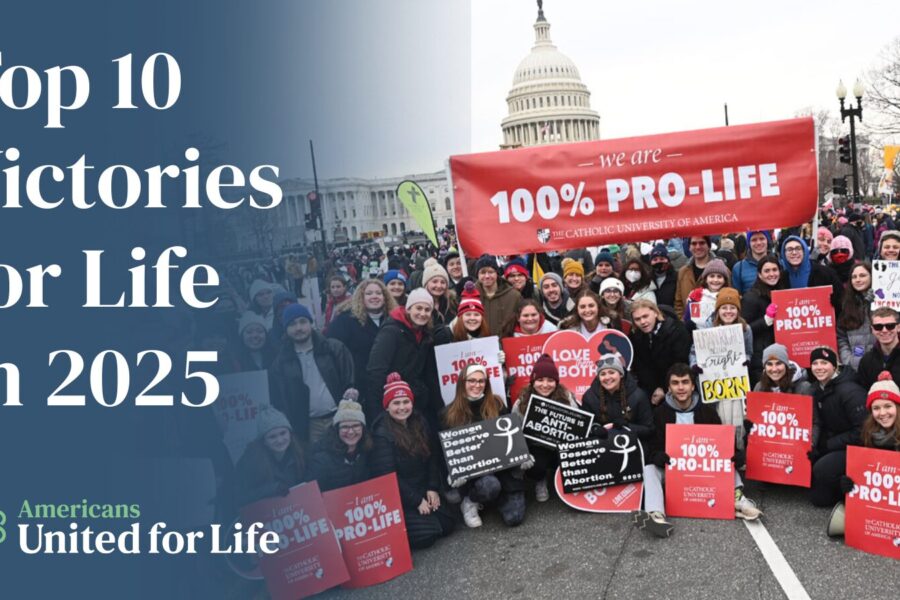By Deanna Wallace
Originally published in The Federalist on December 13, 2016.
For me, the fight for abortion clinic standards started with a name: Deanna Bell. I will never forget the moment I first saw her name on a list of women who had died from “safe,” legal abortion. I felt an immediate connection to this young girl who shared my name.
Deanna was only 13 years old when she died at an abortion clinic in Chicago that had not been inspected for 18 years despite having a history of unsanitary and unsafe conditions that put women and girls at risk. I quickly learned that Deanna was not alone. Since Roe v Wade was decided in 1973, more than 400 women have died during abortion procedures, and countless others have been injured by the under-scrutinized, inadequately regulated, and profit-driven abortion industry.
In a new investigative report “Unsafe: How The Public Health Crisis in America’s Abortion Clinics Endangers Women,” Americans United for Life shines a light on some of these largely untold stories of heartbreak, profiling 11 of the thousands of women who have been killed or gravely injured in legal abortion clinics. These profiles include the very women whom abortion advocates claim “need” abortion access the most: underage girls, poor women, and women of color. The stories of substandard treatment, indifference, and negligence include a refugee who could not even read her “informed consent” form, a teenager whose mother begged for an ambulance to be called for her critically injured daughter, and women whose desperate calls for help went unanswered by abortionists who had already left the state.
Putting Women’s Health at Risk
“Unsafe” also features a detailed analysis of hundreds of violation and deficiency reports from state health inspectors, showing that abortion clinics, including Planned Parenthood facilities, have been routinely cited for putting women’s health and safety at risk over the past eight years.
Among the most common violations found in America’s abortion clinics are failing to ensure a safe and sanitary environment, failing to document and protect patient records, failing to properly train staff, allowing unqualified staff to provide care to patients, using expired medications and medical supplies, failing to purchase and maintain required equipment, failing to adopt and follow health and safety protocols, failing to properly handle medications, failing to comply with physical facility standards, and failing to monitor patient vital signs. More than 750 major violations of these common-sense health and safety standards were found over just the past eight years.
Shockingly, at least 65 of the abortion providers examined were chronic offenders who had been cited multiple times for the same violations in subsequent years. Further, at least 13 abortion providers either failed to report suspected sexual abuse of a minor or failed to implement practices to protect minors from ongoing sexual abuse. At least 30 abortion providers failed to provide or post all required informed consent information, and more than two dozen abortion clinics failed to comply with abortion reporting requirements. While these numbers are appalling, it is important to note that this is simply the tip of the iceberg, as in some states it is difficult or impossible to obtain information regarding abortion clinics and individual providers.
Supreme Court Ignores Safety Evidence
Yet despite the overwhelming body of evidence demonstrating the abortion industry’s proclivity for putting women’s health at risk, the Supreme Court’s recent decision in Whole Women’s Health v. Hellerstedt prioritized “mere access” to abortion facilities and abortion industry profitability over women’s health and safety.
In evaluating the potential damage this flawed decision may inflict upon American women, it is important to remember that Philadelphia abortionist and convicted murderer Kermit Gosnell provided “mere access” to abortion in a clinic where a woman died because a stretcher could not fit through the hallways, where unsterilized instruments spread infections, and where parts of unborn babies were stored in jars and cat food cans like macabre trophies. Despite claims to the contrary by abortion advocates, the evidence compiled in “Unsafe” clearly demonstrates that Gosnell is not an aberration, but rather the norm in an industry desperate to avoid all meaningful regulation and oversight.
While Donald Trump’s election has reinvigorated hopes of overturning Roe, we must take care not to neglect the fight to protect women that is currently taking place in many state legislatures. We must not forget that every single day women are frightened, lied to, coerced, and even forced into abortions that put their lives at risk. We cannot abandon them to unscrupulous “doctors” who don’t care about their safety or clinics that care only about the fees they can collect and not the women they harm. We must continue to fight for the safety of these women with the same passion with which we fight for the safety of their unborn children. We must continue to fight for girls like Deanna Bell.
Deanna Wallace is staff counsel for Americans United for Life.
Print




